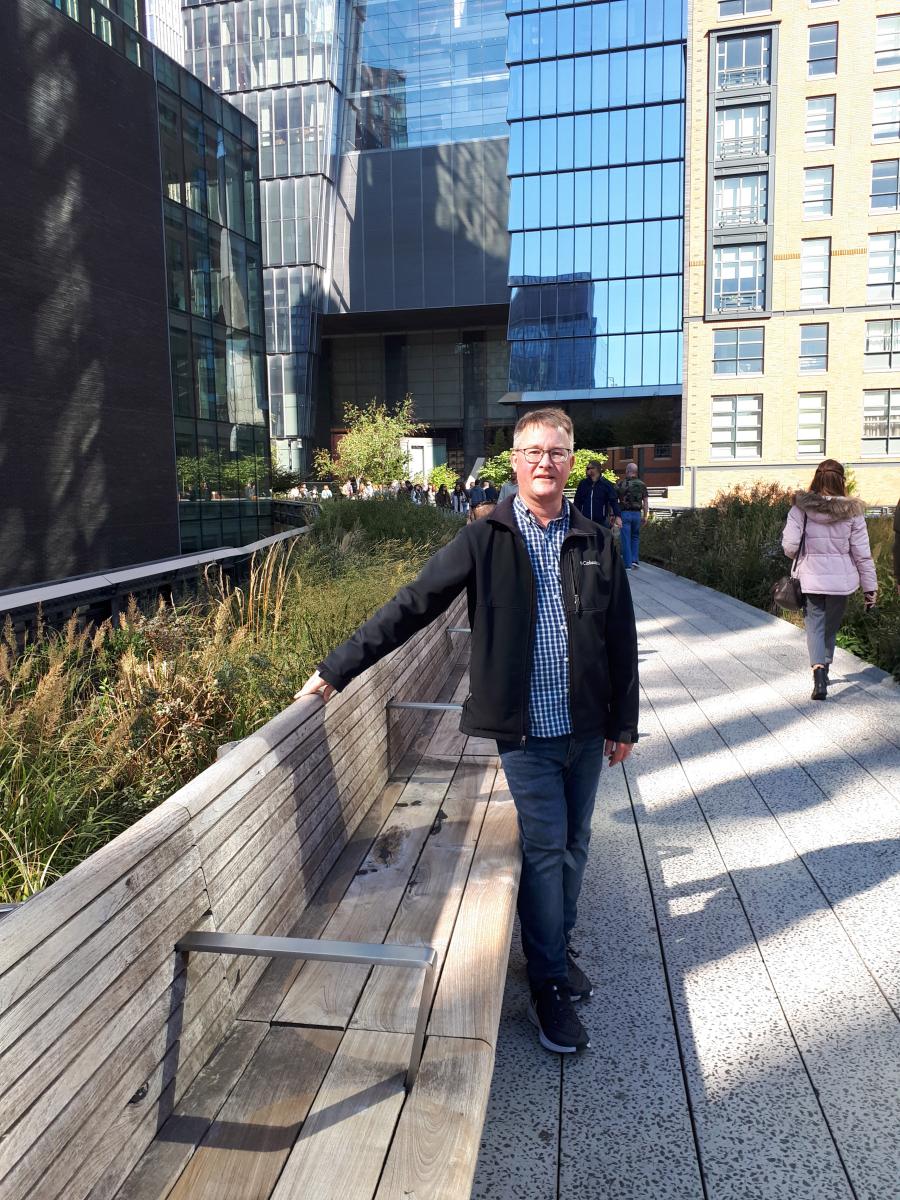This article is part of a series profiling some of TAC’s volunteers. Learn more about TAC’s volunteer structure, the role of volunteers and the benefits of volunteering.
Introducing Brian Hollingworth; TAC volunteer, Director of Transportation Planning and Parking at the City of Hamilton. We interviewed Brian about his experience as a TAC volunteer and working in the transportation sector.
 BH: I am the Director of Transportation Planning and Parking for the City of Hamilton. I have been with the City for just over two years. Prior to that I worked for a consulting firm, IBI Group, for 23 years. It was a bit of a change for sure, but I am enjoying the public service aspects of working for a municipality.
BH: I am the Director of Transportation Planning and Parking for the City of Hamilton. I have been with the City for just over two years. Prior to that I worked for a consulting firm, IBI Group, for 23 years. It was a bit of a change for sure, but I am enjoying the public service aspects of working for a municipality.
Having grown up in a small town about 2 hrs north of Toronto, I moved to ‘The Big Smoke’ in the late 1980s to go to university, for what I figured would be a few years. But there is something overwhelmingly addictive about the energy and vibrancy a large metropolitan area offers which made me stay. So for now, I split my time between working in Hamilton, living with my wife and two kids in Toronto, and playing in Muskoka. The only downside is I went from biking to work for over 20 years to commuting by car. Getting back to a lower carbon footprint is a top priority.
Outside of work, I like to explore cities. Not the touristy things, but areas like construction sites and industrial parks. I also like to build things out of wood; mostly furniture. Last year I built a 40-foot span wooden bridge, which was a good challenge.
BH: When I went into Civil Engineering at Ryerson, Transportation was nowhere on my radar. I wanted to be a Structural Engineer. Did I mention I have a thing for bridges? In my third year at Ryerson I took a Transportation Engineering course which started to tweak my interest. Transportation Engineering seemed to offer a good mix of technical analysis, strategic thinking and socio-economics. My decision was solidified when I got accepted into the Master’s program for Transportation at the University of Toronto.
I’ve since reaped the benefits of having chosen Transportation as a career. During my time in consulting I got to work in every province in Canada as well as many interesting places including Europe, India, and South America. I’ve met some interesting people along the way. In my public sector current role, I’ve added another dimension – being accountable to a City Council – which is both challenging and rewarding.
BH: One of the earlier studies I project managed in the late 1990s was the Downtown Hamilton Transportation Master Plan. Entitled “Putting People First”, it was based on the desire to re-balance Hamilton’s downtown transportation system. It included a wide range of recommendations from one-way to two-way street conversions to cycling and streetscape projects. Many of these projects were implemented and had the effect of revitalizing the downtown. It is what started my passion for the City of Hamilton, and may have contributed to me taking on the job which I am now in.
BH: My first exposure to TAC was through the TAC Urban Transportation Indicators (UTI) Survey. It was one of the first projects I worked on in consulting and quickly exposed to me that there was a national network of people passionate about urban transportation. All of the contributors to the first UTI did so as an add on to their core job duties. Many of those people were also prominent volunteers in the TAC organization.
Shortly after that I started attending conferences and participating in committees. I was the chair of the Sustainable Transportation Standing Committee from 2007-2008 and have been a member of the Urban Transportation Council, now Mobility Council, since that time. I have also participated in several other committees such as the Integrated Committee on Climate Change.
BH: I’ve always considered it a privilege to participate on TAC Committees because one can quickly build professional networks. Typically people who volunteer are also those who rise to higher-level positions over time. So people who I worked with as a volunteer in the early days are now Directors, General Managers and CEOs. Being able to exchange ideas with these individuals at a personal level is invaluable.
BH: I would like to solve the problem of ‘parking space’. Urban planners have guessed that there are as many as eight parking spaces for every vehicle in North America, which is a tremendous waste of land and money, not to mention the environmental impacts. Yet in my current job, I get daily complaints that there is not enough parking. I think the problem is easily solved through a combination of pricing, shared mobility, and shifting of shorter trips to active transportation. And all three of these levers can be accelerated by technology. The reality of cars sitting in a parking lot for eight hours doing nothing while people are at work is somewhat absurd.
BH: Don’t circumvent traditional technical training. Everyone these days wants to plan and design cycling facilities but unfortunately to do that, you still need to understand the basic principles of transportation engineering and roadway design. And sorry, Twitter and Instagram are not sources to learn the principles of transportation design; though they serve a purpose. The most effective people in the transportation industry are those who can apply technical knowledge and design skills to advance concepts for more sustainable transportation systems.